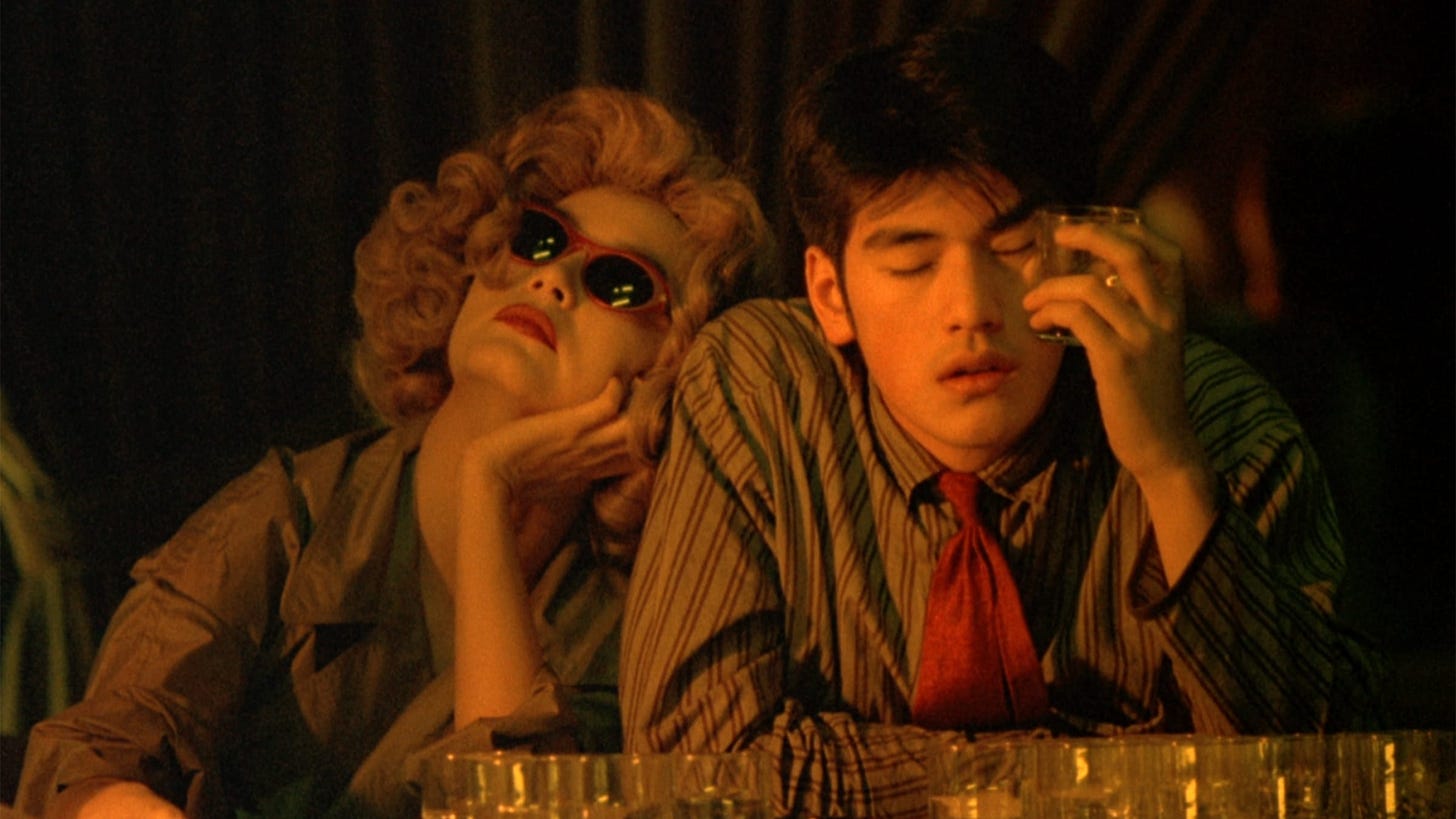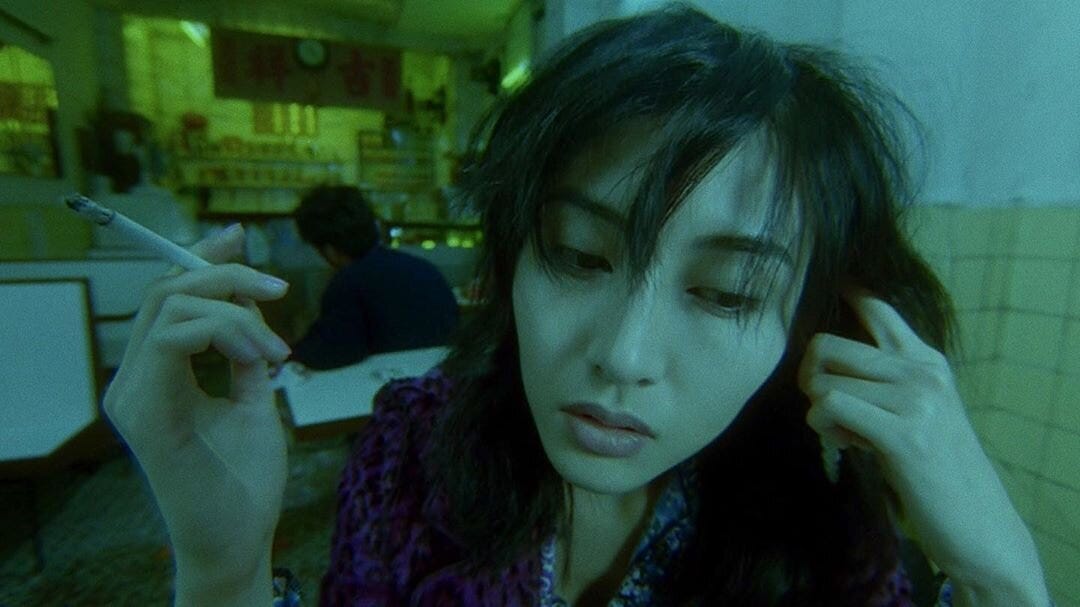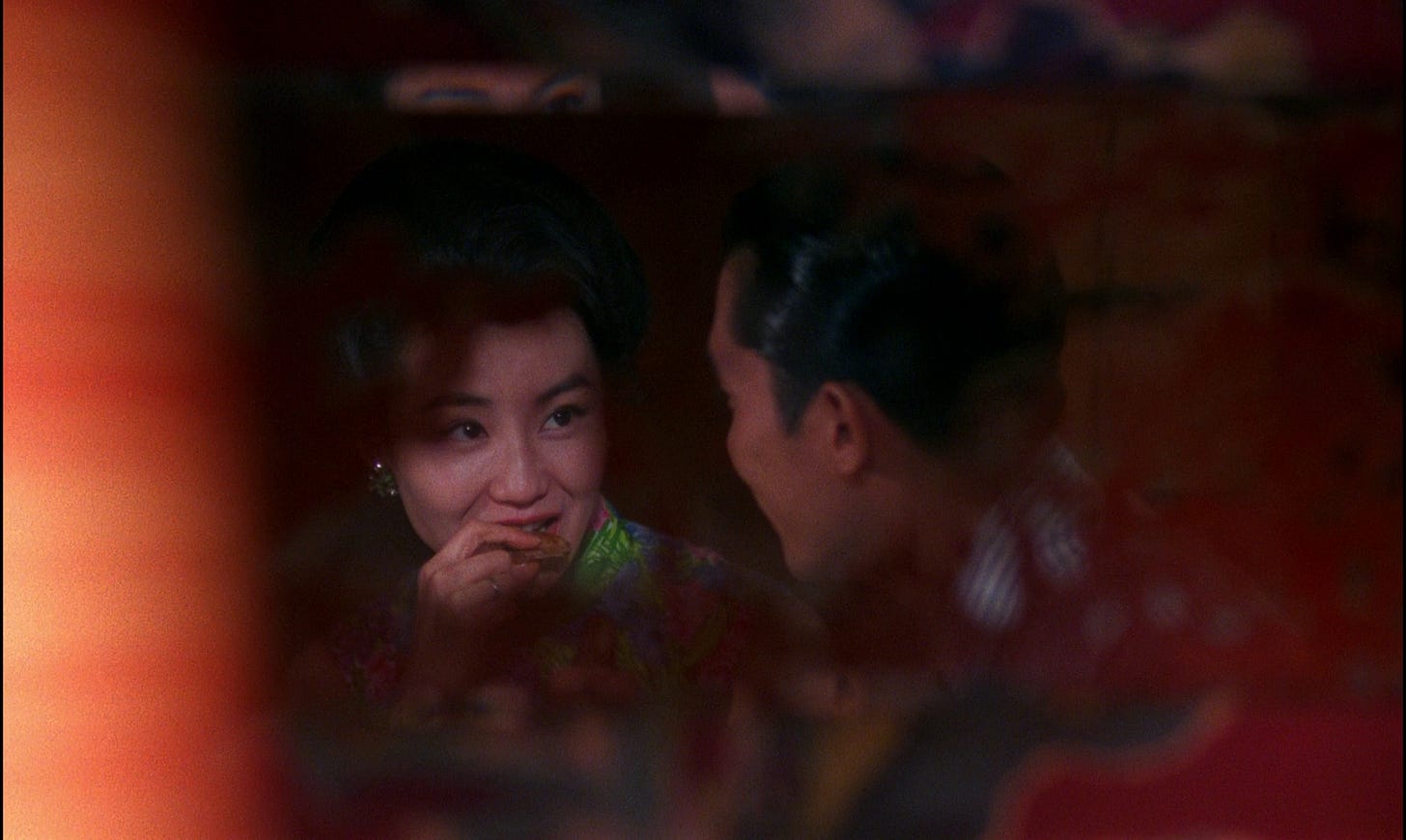Immersing in Wong Kar-Wai's World: From CHUNGKING EXPRESS (1994) to IN THE MOOD FOR LOVE (2000)
Thoughts on four of the director's best.
I took the long way round to get to In the Mood for Love. It has a massive legacy that reaches even someone like myself who has more curiosity than knowledge about film history. Just this past year, it placed fifth on Sight & Sound’s list of the greatest films of all time, but I likely first encountered it via video essays and top 10 lists on YouTube.
That’s a lot of critical acclaim to take in.
I couldn’t quite bring myself to face it directly. The legend of it built up in my mind for many years, and in that time, it seemed like a movie beyond me. A little too special, a little too beloved to be approached out of the blue. So I decided to work my way around to it, and I did so by watching three of director Wong Kar-wai’s other most acclaimed films. Each one helped me to create a generalized picture of Wong’s work before getting to what might just be his most acclaimed piece.
I. Chunking Express (1994)
Perhaps Wong’s most renowned film outside of In the Mood for Love, this 1994 feature probably wasn’t the best place to start for myself. As my first encounter with Wong’s distinct work, the experience didn’t go down quite as smooth as I might have liked. I was a stranger to the vision of Hong Kong portrayed here—a bustling metropolis that blurs past, populated by lonely people that make strange choices in their desperate search for some form of deep, human connections.
As a neophyte to this world, my viewing of Chungking was weighed down by questions like “Really, all that pineapple?” and “Who breaks into an apartment just to clean it?” In retrospect, perhaps not things that might bother me when I ever return to this film, but that remains to be seen.
All that said, it’s an instructional film as far as Wong’s filmography goes. So many of his stylistic trademarks appear here. The quirky characters, the insistent needle drops, his use of step-printing to create a stuttering slow mo, voiceover narration, branching plotlines, all make an appearance here and will recur throughout his filmography later on.
II. Fallen Angels (1995)
At one point, halfway through the movie, Ho Chi-mo (Takeshi Kaneshiro) finds himself consoling a perpetually heartbroken woman named Charlie. While holding her in an embrace, he comments internally that, “The night is full of weirdos.” That single line acted as a keystone to me as far as these movies go. The strangeness that alienated me in Chungking Express wasn’t some accident or weird for weird’s sake. Rather, it’s a running theme in Wong’s work, people seeking relationships in odd ways. They don’t have to make sense to me, but the characters believe in them so deeply and that’s what counts.
Angels returns to the same world that Wong Kar-wai gained so much acclaim depicting the year before. Crafted from a storyline that Wong had to excise from his original draft of the Chungking screenplay, Angels shares more than just its setting with the former. Plot-wise, we again follow characters loosely connected by their brief interactions in the crowded city as they cross paths, form connections, and break them off. Visually, it’s the same smoky, grimy side of Hong Kong seen through a haze of cigarette smoke and neon lights.
Another theme that gets developed further in Fallen Angels is the importance of space. Locations carry such weight for Wong Kar-wai’s characters. Vast open stadiums become places of isolation and heartbreak, a dingy apartment or a barstool become tenuous connections in place of actual physical touch. Characters obsess over these spaces, they poke and prod at them, looking for the impressions left behind by those they seek.
III. Happy Together (1997)
This feels like Wong refining many of the techniques from the last two movies. There’s still visual flourishes here, like the occasional use of black and white or the beautiful Hong Kong upside down sequence. However, Happy Together strips down a lot of the flashier visual choices that characterized Chungking and Angels. Most noticeable to me would be his far more judicial application of the step-printing to emphasize quiet moments of intimacy between his character. When Tony Leung lets Leslie Cheung light a cigarette with his own, it’s almost stunningly sweet and quiet.
Writing wise, Wong has a greater focus here than ever before as well. Where Chungking and Angels sprawl with their parallel plots, this film remains content to linger with three core characters—the explosive on and off couple of Ho Po-Wing and Lai Yiu-Fai, and Chang (Chen Chang). The importance of space remains on the micro scale as our lead couple form their own, tempestuous world in the confines of a cheap apartment, and also in the macro, as the country of Argentina itself isolate our leads from their homes on the other side of the world.
This focus allows the movie to breathe in a way that the films before didn’t. Where the others seemed to rush past, leaping about the Hong Kong landscape, Happy Together lingers. It allows the characters to get caught up in each other’s lives, so that the eventual untangling across the world leaves a stronger impression than ever before.
IV. In the Mood for Love (2000)
Where Happy Together felt like a refinement of technique, In the Mood for Love reads more like a liberation from obligation. Where the first two films I discussed are bursting with an energetic ambition, this instead exudes the confidence of a craftsman who’s mastered their own style to such a degree that there’s no more need to be loud about it.
Restraint and denial characterize In the Mood for Love on every level. In the most obvious sense, Chow Mo-wan (Tony Leung) and Su Li-zhen’s (Maggie Cheung) romance is doomed from the go. The gossiping eyes of society, their loveless marriages, and their own pride keep them from ever taking their relationship to the next step. They brush up against each other on the steps to a noodle stand, they occupy cheap motel rooms but only to write, they sit respectfully on opposite ends of a restaurant booth.
The camera emulates this same shyness and caution. We see Chow and Su from around cramped apartment corners or through the bars of windows. We are as isolated from these characters as they are from each other—hell, we never even see the faces of their respective spouses. Characters appear framed in doorways and hallways, often visually separated from others around them. They’re filmed in close up even during dialogue, obscuring the others in frame. Such is the effort to create this atmosphere of lonely stillness, that when a camera suddenly whip pans between Chow and Su during a conversation at a restaurant, it comes across as stunning, borderline violent.
Again, space takes a central role here. The vibrant Hong Kong of the 90s takes a backseat to the same city in the 60s, centered almost entirely around a single apartment building. Our leads are pressed in against each other by narrow hallways, they hunker down under canopies to escape the pouring rain. Even in these claustrophobic spaces, they’re separated by the slimmest of spaces. Walls divide them in their apartment complex, even when they share a room, they never share a bed or even a chair.
Everything’s at a remove, even the emotion. In a quiet movie, the two biggest bursts of emotion come not from moments of confrontation, but from rehearsals of them. Both times, Su breaks down crying while roleplaying two different separations—one from her husband and one with Chow. The moments themselves are too big, too painful, we’re shown only the anticipation of them. The emotions are too grand, they would drown in over-expression, instead here, they’re whispered quietly into a tiny hollow.








